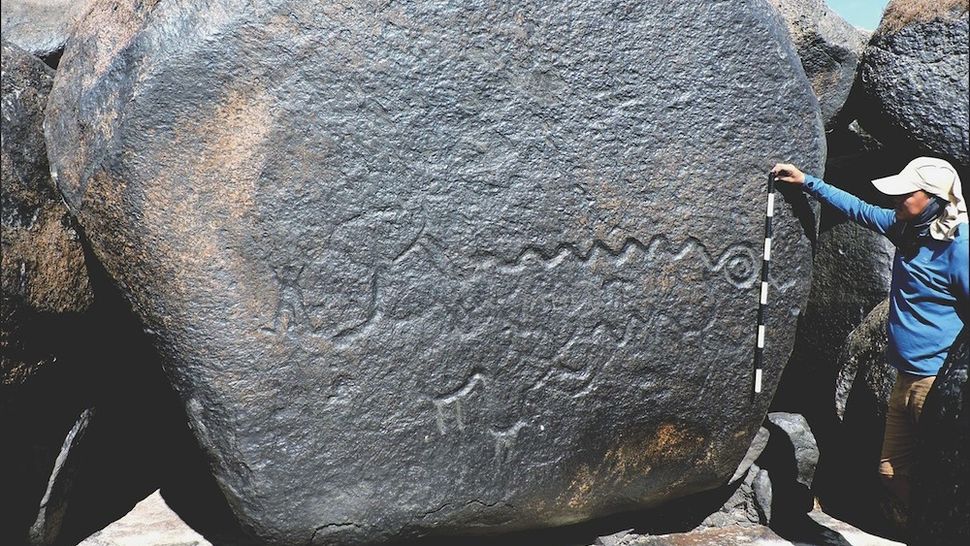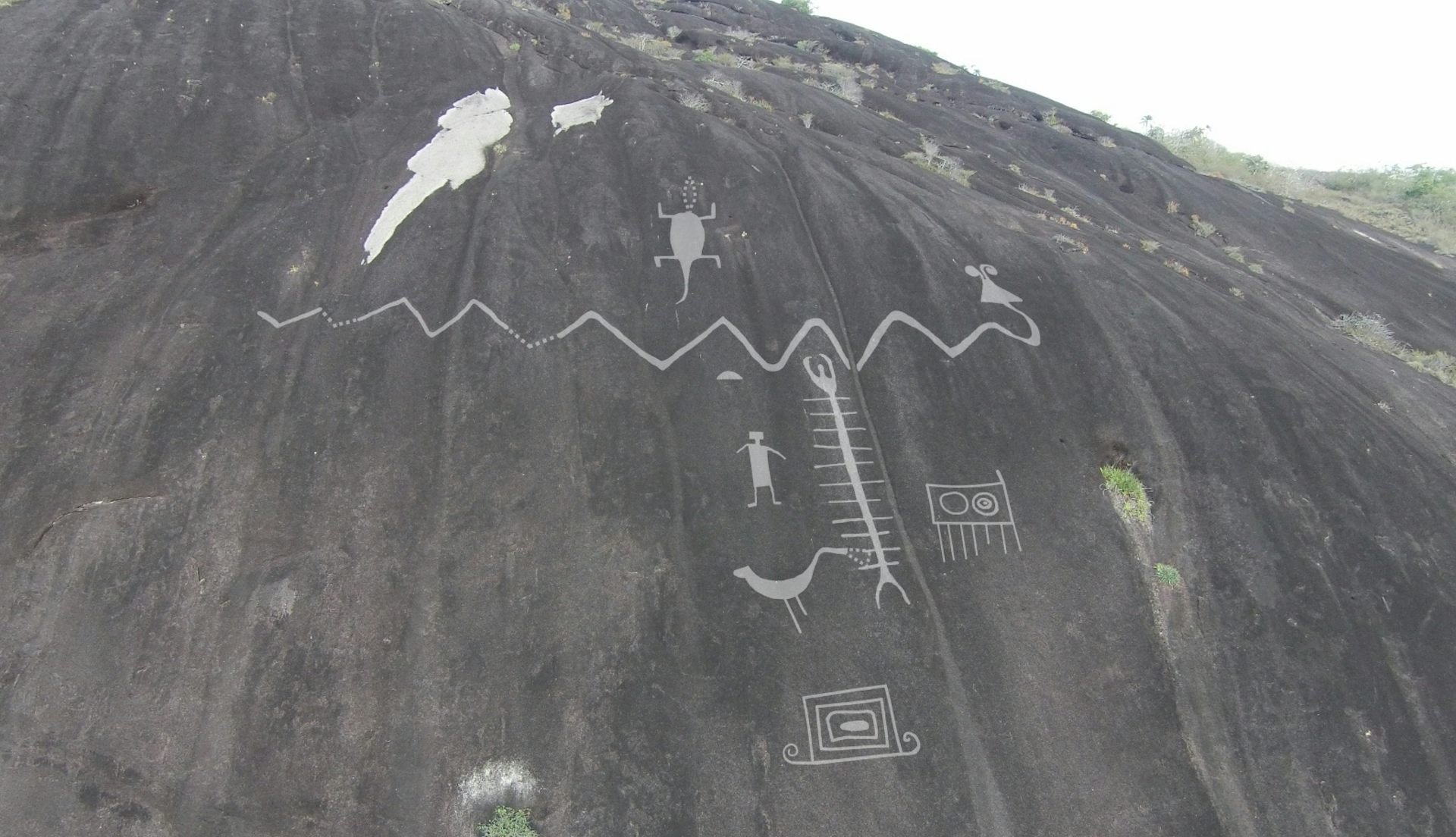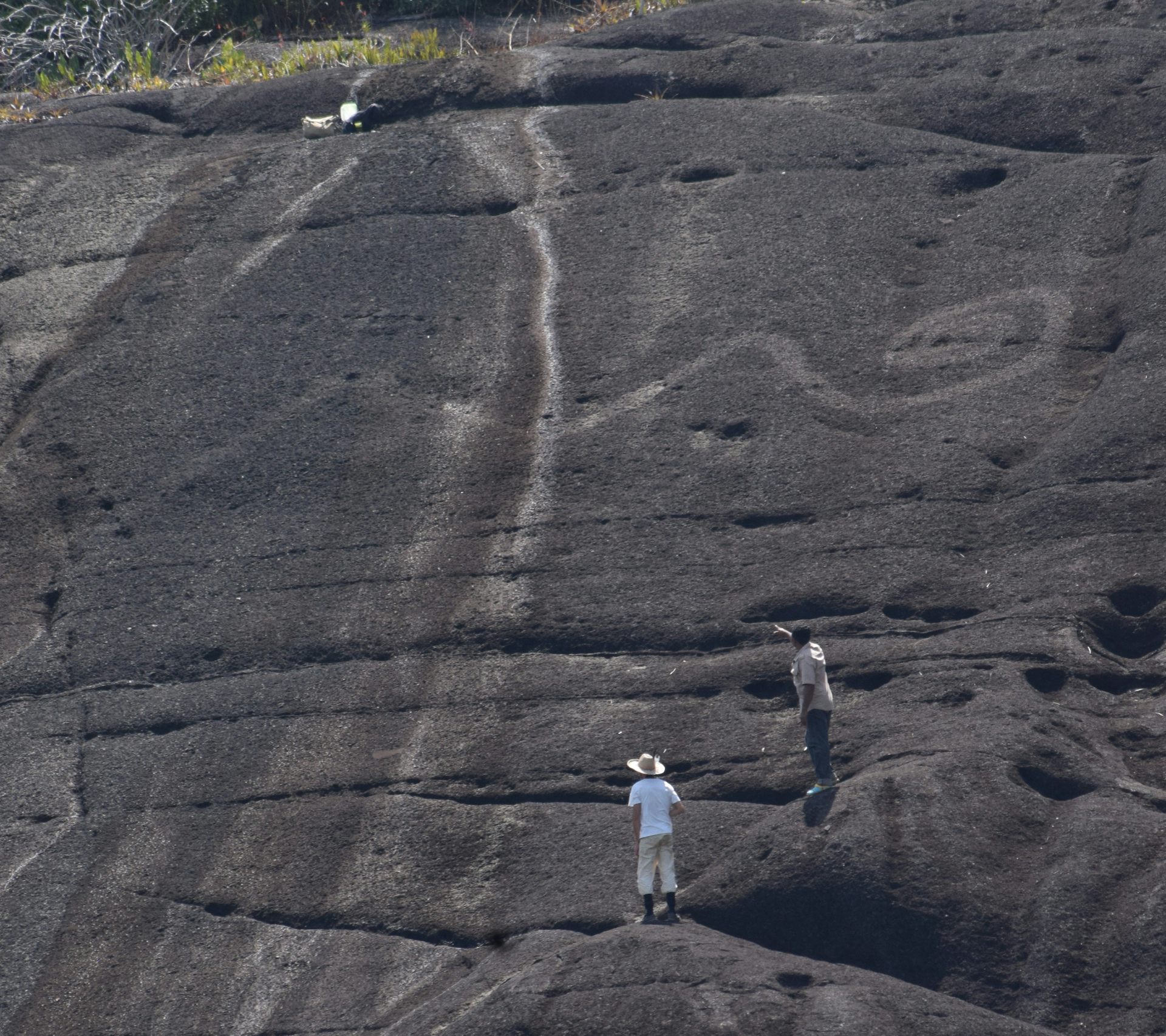Latin America
Related: About this forum2,000-year-old rock art, including nearly 140-foot-long snake, may mark ancient territories in Colombia, Venezuela
By Jennifer Nalewicki published yesterday
Archaeologists used cameras and drones to fully map 14 massive rock art sites scattered across Venezuela and Colombia.

r
The most common motifs found in the region include depictions of snakes. (Image credit: Philip Riris et al.; Antiquity Publications Ltd.; (CC-BY 4.0 Deed))
Archaeologists have fully mapped a series of ancient rock art in Venezuela and Colombia, including the world's largest monumental engraving, using photography and drone footage.
The masterpieces, which feature both human and animal motifs, are prominently located along the Upper and Middle Orinoco River, which snakes through this region of South America. Researchers think the placement was intentional and was meant to be seen from a distance, since it was along the path of an important trade and travel route known as Atures Rapids, according to a study published Tuesday (June 4) in the journal Antiquity.
"One interpretation is that there was some aspect of territoriality at play," lead author Philip Riris, a senior lecturer in archaeological and paleoenvironmental modeling at Bournemouth University in England, told Live Science. "It was a way of marking their territory and saying that this is our domain."
Researchers are unsure of who created the massive engravings, the largest of which stretches 138 feet (42 meters) long. However, they do know that some of the subject matter, including a focus on snakes like boa constrictors and anacondas, "played an important role in the myths and beliefs of the local indigenous population," according to a statement from Antiquity.
More:
https://www.livescience.com/archaeology/2000-year-old-rock-art-including-nearly-140-foot-long-snake-may-mark-ancient-territories-in-colombia-venezuela
Judi Lynn
(162,336 posts)
Enhanced image of monumental rock art on Cerro Pintado, Venezuela. Philip Riris, Author provided
Published: June 4, 2024 12:17pm EDT
We weren’t the first to lay eyes on the engraving since it was carved into the hillside any number of centuries or millennia ago, not by a long shot. The Venezuelan archaeologist José Maria Cruxent even recorded it in his diaries in the 1940s – and there were certainly visitors before him.
The site of Cerro Pintado (Painted Hill), in the Venezuelan state of Amazonas, is a local landmark and a well-known fixture on the itinerary of those travelling on the Middle Orinoco River. Yet viewing the gigantic snake, carved high up on the hillside, immediately ignited both our sense of wonder and our scientific curiosity. Why a snake? Why did its creators climb a towering granite hill to place it there, just so? What about all the other engravings orbiting it – what do they mean?
All these questions and more swirled around our little group as we stood, sticky and mosquito-bitten, in the savanna at the foot of the hill. Its singular status made it all the more intriguing.
While there are other examples of giant prehistoric rock art in other parts of the world, these appear to be the largest. While, as mentioned, some were already known to archaeologists, our team documented others, including over the border in Colombia.
. . .

Telephoto shot of monumental rock art of snake tail in Colombia, humans for scale. Jose Oliver, Author provided (no reuse)
More:
https://theconversation.com/documenting-the-worlds-largest-prehistoric-rock-art-in-south-america-new-study-231401
Silent Type
(6,390 posts)Judi Lynn
(162,336 posts)Judi Lynn
(162,336 posts)Rock art along the Orinoco river in South America is made up of some of the largest etchings we know of and could date back 2000 years
By Chen Ly
4 June 2024
Prehistoric engravings of giant snakes along South America’s Orinoco river are among the largest examples of rock art we know of anywhere in the world, with some stretching for more than 40 metres.
The Orinoco is one of the world’s largest rivers, flowing through Venezuela and along its border with Colombia. “There’s an outstanding record of rock art along the Orinoco, especially on the Venezuelan side,” says José Oliver at University College London. “Usually, they are paintings found in rock shelters.”
Engravings are common in many open-air sites along the river, he says, but not all of them have been officially recorded. Since 2015, Oliver and his colleagues have taken several trips to areas along the Colombian and Venezuelan margins of the river to build a better picture of its rock engravings.
“It wasn’t difficult to encounter new sites,” says team member Philip Riris at Bournemouth University in the UK. “Every time you go round a corner, there was always more.”
Of the 157 rock art sites that the team has managed to visit, 13 were made up of engravings that were at least 4 metres tall. “Anything that size is monumental in our view,” says Riris. “That means they’re often visible from quite far away, maybe 500 metres to a kilometre.”
Most of the engravings depict people, mammals, birds, centipedes, scrolls and geometric shapes, but snakes were among the largest motifs, with the biggest measuring 42 metres across. In the mythology of the Indigenous Orinoco people, anacondas and boa constrictors are primordial creators, so are held in high regard, says Riris.
More:
https://www.newscientist.com/article/2433595-ancient-snake-drawings-are-among-the-largest-known-rock-art-worldwide/
Judi Lynn
(162,336 posts)Archaeologists have discovered one of the world’s largest collections of ancient art
David Keys
Archaeology Correspondent
8 hours ago
Archaeologists have discovered one of the world’s largest collections of ancient art, showing giants and monsters walking the Earth.
In a remote area of South America, a British-led research team has discovered more than a thousand prehistoric engravings – including the world’s largest examples of prehistoric rock art. However, the archaeologists believe that the examples found so far are only the “tip of a vast ancient artistic iceberg” – and that many more still await discovery.
It’s thought likely that the thousand-square-mile area (the size of Dorset) may well contain around 10,000 ancient engravings. The largest discovered so far is a 43-metre-long engraving of a giant serpent. Others portray giant centipedes, larger-than-life animals – and immense 10-metre-tall human-like figures.
The engravings – discovered along the Colombia/Venezuela border – portray everything from stingrays and vultures to monkeys and crocodiles, from dogs and jaguars to turtles and frogs.
There are also a large number of geometric engravings (mainly concentric circles, grid patterns and dot-filled triangles), representing as yet unidentified objects.
More:
https://www.independent.co.uk/news/science/archaeology/colombia-venezuela-rock-art-giant-snakes-b2556860.html